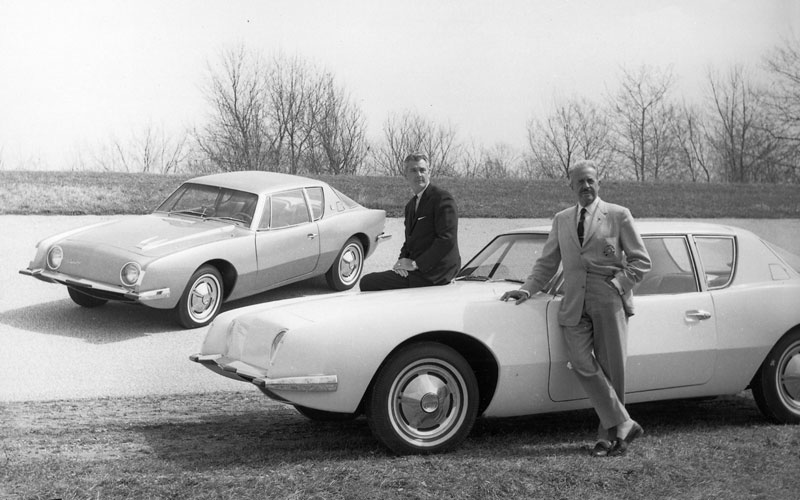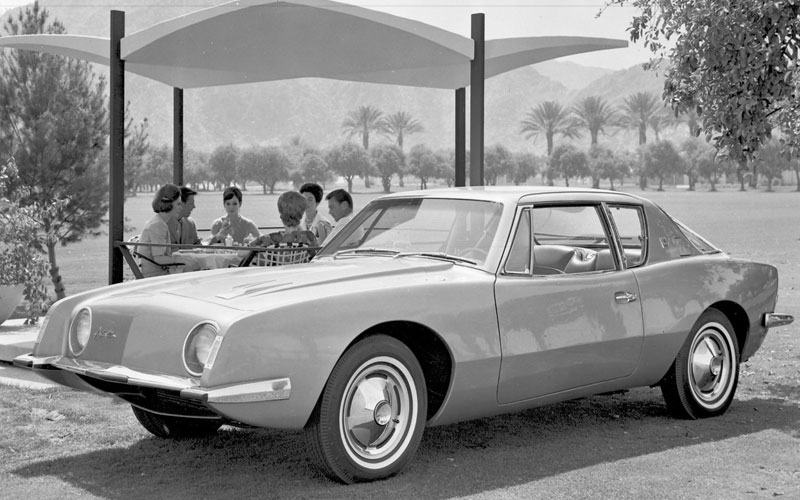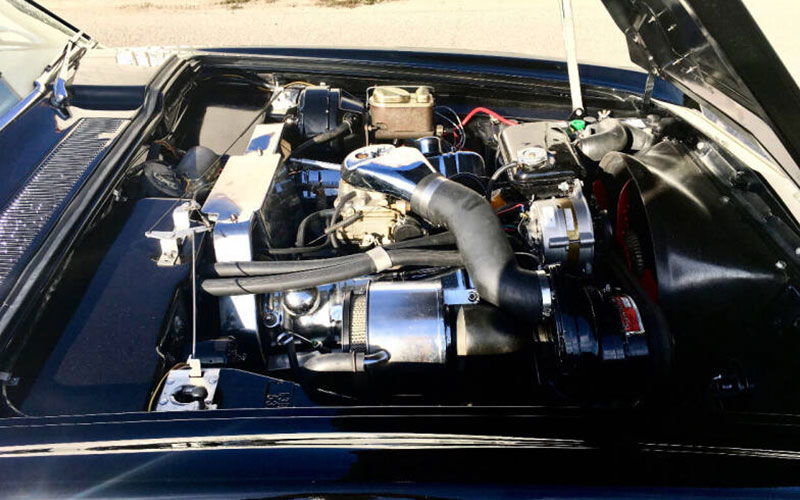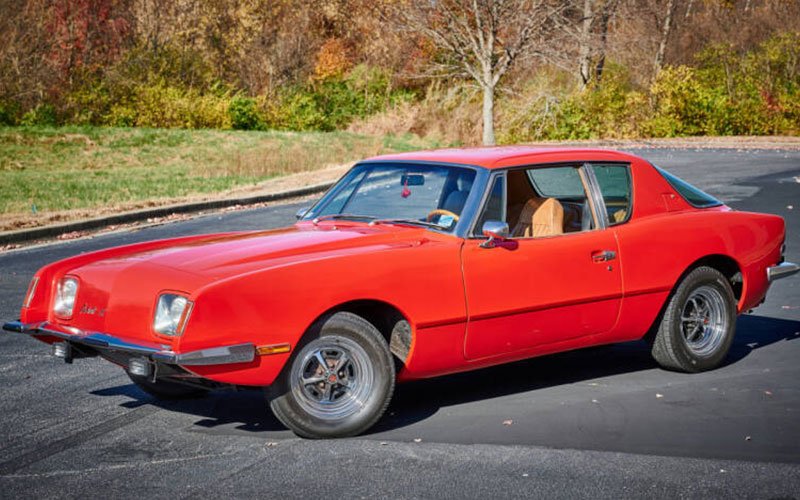Cool Car Find: Studebaker Avanti
The Studebaker Avanti was the fastest production car in the world in 1963. Check out this Cool Car Find on Carsforsale.com
Studebaker’s Last Hurrah

Studebaker Avanti – archives.studebakermuseum.org | Shop Studebaker Avanti on Carsforsale.com
The Studebaker Avanti doesn’t look like other cars of its day. That was on purpose. Rather than following current trends, the Avanti was intended to make a bold statement. With a radical design and even more impressive performance, the Avanti seemed capable of doing the near impossible, saving Studebaker from bankruptcy.
Studebaker, the once great American coachbuilder turned automaker, was a struggling company by the 1950s. A merger with Packard in 1954 failed to turn things around for the company. In 1961, the newly minted CEO of Studebaker, Sherwood Egbert, felt the company needed a new halo car to draw customers onto lots. The resulting car, the Avanti, wasn’t enough to save the struggling Studebaker, but the car made history, outlived the company, and still turns heads today.
Below we’ll take a look back at the history surrounding the Studebaker Avanti and take a look at an excellent example that’s currently listed on Carsforsale.com.
From South Bend to Palm Springs

Since Studebaker’s finances weren’t in great shape, CEO Sherwood Egbert knew that whatever halo car they could build would have to be completed in record time in order to save the company. The goal was to have a prototype ready for the 1962 New York International Auto Show. That gave designers and engineers less than two years to work.
First, Egbert called up designer Raymond Loewy, who’d done previous work for the company designing the Studebaker Starlight. Loewy, under a tight deadline, drew together a small group of designers and rented a house in Palm Springs, California, not far from Loewy’s own home. The team worked feverishly, putting in 16 hours days for weeks on end until they had a design.

The Avanti would be a major departure from the stylings of the 1950s, dispensing with the prominent grille work and end-to-end chrome, for a sleek and aerodynamic design that instead would take cues from Le Mans racecars and even the design of the Coca-Cola bottle (which, not coincidentally, Loewy had helped redesign in 1955). The new car would be given its name, Avanti, derived from the Italian for “forward.”
Back in South Bend, Indiana, with the design approved, it was up to the Studebaker engineering team to execute. Egbert’s requests for the new car were lofty. “It must be tops in speed, braking, handling, safety features, and general innovation – and please don’t spend any money,” wrote Egbert to his engineering team. Though delivered with good humor, Egbert was also totally serious. The Avanti would need to wow car buyers if it stood a chance of salvaging Studebaker’s fortunes.
Setting Records

But the Studebaker engineers met their moment and the Avanti largely delivered on Egbert’s targets. The car was built using the Studebaker Lark’s chassis and the 289 cu.-in. V8 from the Studebaker Hawk. A fiberglass body was employed, largely to speed up production. Four disc-brakes were also to be used, one of their very first uses in a production car. Most significantly, the 289 V8 would be given a Paxton supercharger, upping the horsepower from a standard 240 horsepower in the R1 version, already good power for 1961, to a very healthy 290 horsepower in the R2. An R3 version, tuned to more than 300 horsepower was also built, but only in very low numbers.
As good as the car was, the Avanti was still a Studebaker. This meant the car’s production was plagued by delays and production and quality issues. Despite an enthusiastic reception by critics and customers, Studebaker fell well short of the target of 20,000 units, able to ship just 1,200 Avantis in the first year of production.

In 1963, in an effort to reinvigorate interest in the car, Studebaker took the Avanti out to the Bonneville Salt Flats. There the Avanti set some 29 production car speed records including a top speed of 168 mph. Making it the fastest production car in the world in 1963.
Production picked up somewhat, with roughly 4,000 cars built. But that was far short of what the company needed in order to stave off the inevitable. Studebaker ceased US production in December of 1963, though production would continue in Canada through 1966. And yet, this wasn’t the end for the Avanti.
An Enduring Design

Such was the appeal of the Avanti that two Studebaker dealers, Nathan Altman and Leo Newman bought the rights to the Avanti name, along with tooling and parts, and set to work with the help of former Studebaker employees building more Avantis. Unfortunately, the new Avanti II lacked a dealership network for sales and distribution. Instead, the company relied on word of mouth to sell cars. This meant production was often limited to dozens of cars per year.
Still, the Avanti soldiered on through various refreshes, a buyout in the 1980s, and even a brief stint in the 24 Hours of Daytona. The Avanti would stay in production, in some form, through 2006.
Studebaker Avanti R2 For Sale

1963 Studebaker Avanti R2 – carsforsale.com | Shop Studebaker Avanti on Carsforsale.com
Here on our site, we have an excellent example of a 1963 Studebaker Avanti R2, complete with that supercharged 289 V8.
It’s easy to see why this car is remembered for its innovative design. The front end hides the radiator grille under the nose. Then there’s the protruding ends to the front bumper and pair of expressive headlights. The long, flowing bodylines personify the Avanti’s “forward” moniker. Around back is a subtle chrome bumper and a wrap-around rear window. The car is finished in its original Avanti White with a red and grey interior.









